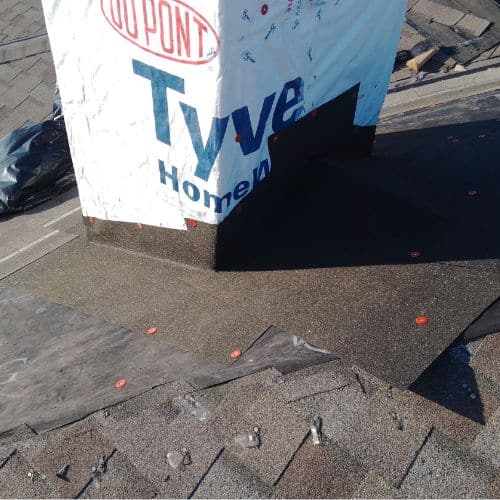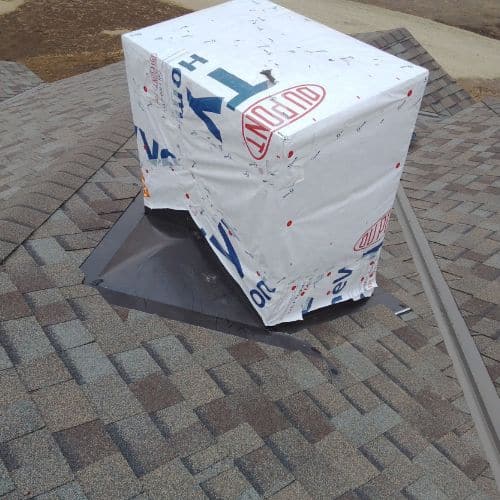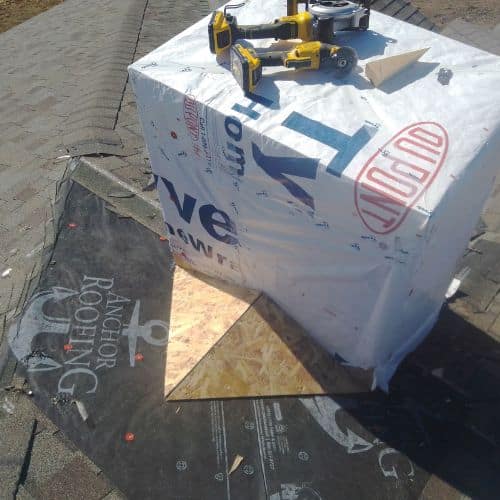Learn to Spot Damage to Your Chimney Flashing
Your roof is much more than just the shingles that make up most of its visual area. Many other components play a key role in protecting your home from moisture, and one of the most important of these is flashing. Installed around areas like your roof’s edge, valleys, and your chimney, flashing protects the seams and vulnerable parts of your roof—and like anything else on your roof, it can become damaged or deteriorated over time.
At Anchor Roofing, a major goal of ours as Omaha roofers is to educate homeowners. That includes equipping homeowners to identify potential signs of trouble—so that they can contact a roofer before damage worsens any further. Chimney flashing is frequently an area of vulnerability on residential roofs. So in today’s post, we’re sharing more about the role of chimney flashing and how to spot signs of damage.
What Is Roof Flashing?
Flashing is a catch-all term that refers to products installed to protect vulnerable areas of your roof. Roof flashing may be installed along the edges of your roof, around skylights and roof vents, in roof valleys, and around your chimney.
While shingles do their best to protect against moisture intrusion, the various seams of your roof need extra protection to prevent rainwater from penetrating through the surface. That’s where flashing comes in, creating a watertight seal over these vulnerable parts of your roof.
What Is Chimney Flashing?
Chimney flashing simply refers to flashing installed around the chimney of a roof. While it’s just a subset of roof flashing, it’s often referred to on its own as the area of a roof around the chimney is frequently more susceptible to moisture issues than other areas.
Chimney flashing keeps out rain, snow, and other forms of moisture, forming a watertight seal beyond what shingles can provide.


How Is Chimney Flashing Installed?
While it may seem simple, the process of flashing around a chimney is actually somewhat complex. Several different steps are required to ensure a completely watertight seal—and unfortunately, chimney flashing installation mistakes are a frequent cause of roofing problems.
Chimney flashing is installed underneath the shingle layer. First, the roof deck must be inspected to ensure it’s in good condition. Then, the base flashing will be installed first, followed by step flashing along the sides, and finally cap flashing at the top. All joints are then sealed, typically with roofing caulk, to ensure total watertight protection.
Common Chimney Flashing Problems
Assessing chimney flashing damage or issues will typically require a professional roof inspection. This is because, depending on where your chimney is located, it may be difficult to get a close look at the flashing around it without walking on your roof—and this generally isn’t recommended if you aren’t a roofer.
That said, there are some signs of problems with your chimney flashing that you may be able to spot from inside your home or from a ladder. Those include:
- Leaks or water stains on your ceiling, particularly near your chimney
- Missing pieces of flashing or flashing flapping in the breeze
- Signs of rust or corrosion if metal flashing was used
- Missing, peeling, or deteriorating sealant, compromising the watertight seal

What’s Next?
If you notice signs of deterioration on your chimney flashing, the next step is to call a trusted roofing company. Flashing repair generally isn’t something to DIY. Because flashing is installed in vulnerable areas of your roof, it’s crucial that it’s repaired or replaced correctly.
Repairing flashing will also require removing and replacing shingles around the affected area, leaving further potential for mistakes if you aren’t a professional.
Reach Out to Anchor Roofing Today!
As residential roofing experts, our team at Anchor Roofing has the skills and experience to effectively repair or replace your chimney flashing and avert significant issues such as leaks and water damage. In the process, we’ll complete a thorough inspection of your entire roofing system to ensure your home is well-protected against the elements. Reach out to our team to get started!
